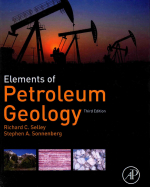Добрый день, Коллеги. Важное сообщение, просьба принять участие. Музей Ферсмана ищет помощь для реставрационных работ в помещении. Подробности по ссылке
Petroleum exploration: past, present and future. Elements of petroleum geology / Поиски нефти: прошлое, настоящее и будущее. Элементы геологии нефти
Petroleum exploration is a very old pursuit, as the preceding quotation illustrates. The Bible contains many references to the use of pitch or asphalt collected from the natural seepages with which the Middle East abounds. Herodotus, writing in about 450 BC, described oil seeps in Carthage (Tunisia) and the Greek island Zachynthus (Herodotus, c. 450 BC). He gave details of oil extraction from wells near Ardericca in modern Iran, although the wells could not have been very deep because fluid was extracted in a wineskin on the end of a long pole mounted on a fulcrum. Oil, salt, and bitumen were produced simultaneously from these wells. Throughout the first millenium AD, oil and asphalt were gathered from natural seepages in many parts of the world. The early uses of oil were for medication, waterproofing, and warfare. Oil was applied externally for wounds and rheumatism and administered internally as a laxative. From the time of Noah, pitch has been used to make boats watertight. Pitch, asphalt, and oil have long been employed in warfare. When Alexander the Great invaded India in 326 BC, he scattered the Indian elephant corps by charging them with horsemen waving pots of burning pitch. Nadir Shah employed a similar device, impregnating the humps of camels with oil and sending them ablaze against the Indian elephant corps in 1739 (Pratt and Good, 1950). Greek fire was invented by Callinicus of Heliopolis in AD 668. Its precise recipe is unknown, but it is believed to have included quicklime, sulfur, and naphtha and it ignited when wet. It was a potent weapon in Byzantine naval warfare <...>




